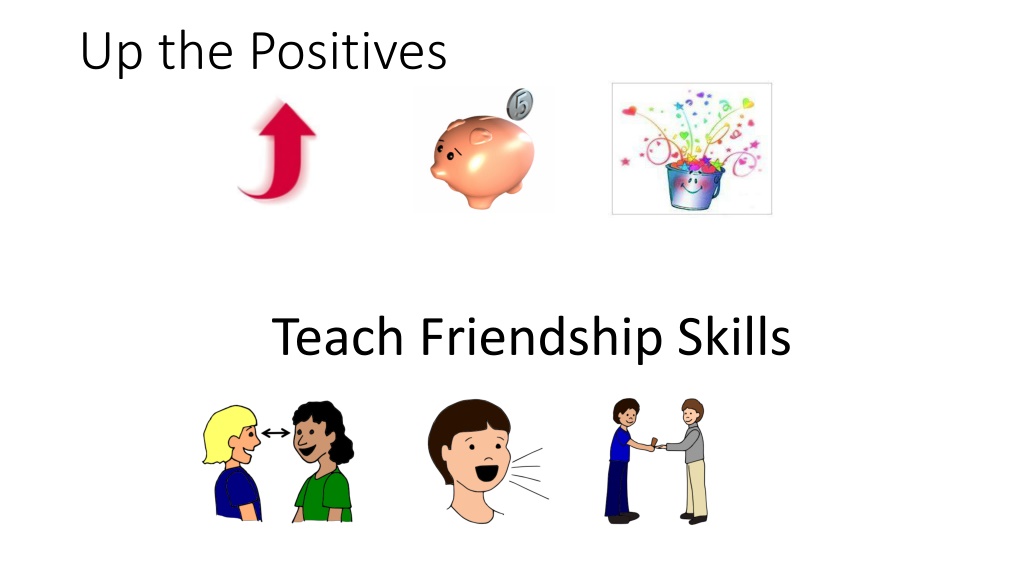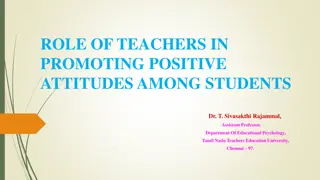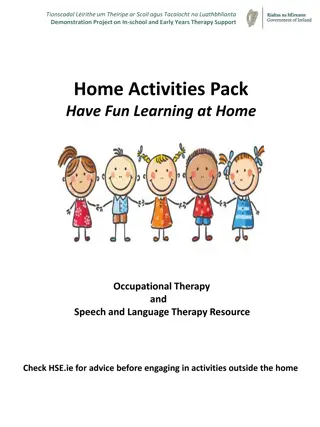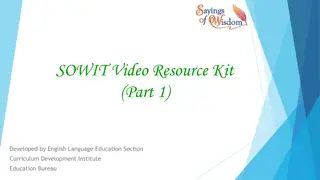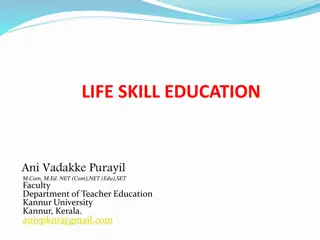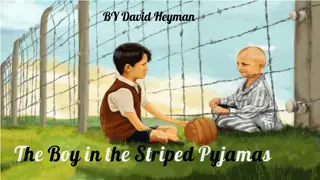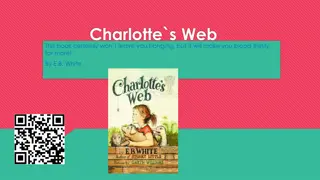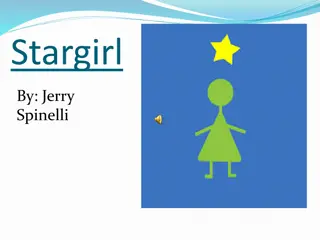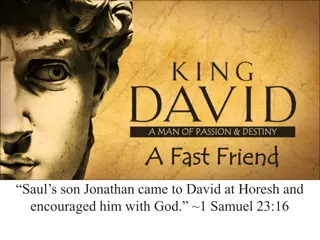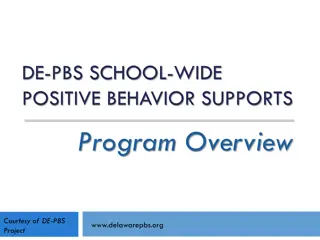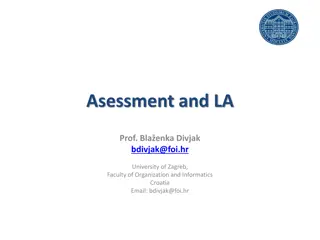Encouraging Friendship Skills through Positive Teaching Methods
Exploring the importance of teaching friendship skills and emotional literacy to children through positive approaches. Highlights include the benefits of emotional literacy, strategies for reducing challenging behavior, and fostering a supportive environment for children's social development.
Download Presentation

Please find below an Image/Link to download the presentation.
The content on the website is provided AS IS for your information and personal use only. It may not be sold, licensed, or shared on other websites without obtaining consent from the author. Download presentation by click this link. If you encounter any issues during the download, it is possible that the publisher has removed the file from their server.
E N D
Presentation Transcript
Up the Positives Teach Friendship Skills
WE ARE SO GLAD THAT YOU ARE HERE! Virginia Stacy Introductions
Grateful for . Curious About Up the Positives Teaching Friendship Skills Write Anything You are Grateful for and 1 Thing that you are Curious About Teaching Up the Positives or Teach Friendship Skills to children (1 min)
Today 1) Up the Positives 2) Friendship Skills 3) Action
Why? Are these skills Important?
Children who have a Strong Foundation in Emotional Literacy Tolerate frustration better Get into fewer fights Engage in less self destructive behavior !!!!!!!!!!!!!!! than children who do not have a Strong Foundation in Emotional literacy What Works Briefs #21
Children with strong emotional literacy ARE healthier less lonely less impulsive more focused have greater academic achievement What Works Briefs #21
Here is the Target At least 5:1
BIG NEWS!! 5 Positive Statements to Every No Don t Stop Quit and Question REDUCES CHALLENGING BEHAVIOR
Positives: Any Statement that is not a Demand. Negatives: No, Don t Stop, Quit, Any Question
What Do You Want the Child to Do? Say What You Want The Child to Do! AS
1)Write 1 Don t do that! 2)Write What You Want the Child to Do! ( 1 minute)
Save these for Safety Concerns Save these for Safety Concerns NO Don t STOP QUIT
Stand UP Do 30 Seconds Of Energizing Moves then Kiss Your Brain!
Up the Positives for: Following Directions Behavior Activity Skills
Positives for Following Directions You got a book to read. You got your shoes and your coat. Thanks for getting your backpack. 4. 5. Type Your Favorite in the Chat Box Write 2 more Positives that a Teacher can use for Following Directions
Positives for Behavior You took 3 breaths and calmed down. You are a friend, you shared the toy. You waited for Erika to go down the slide. 4) 5) Write 2 More Positives a Teacher Can Say for Behavior (1 min)
Positives for a Parent Doing an Activity with a Child You told Jose exactly what to do. You pointed to the puzzle piece he needed next When she finished, you said, You did it! 4) 5) Write 2 More Positives that You Can Say to a Parent AS Experience
Positives for Your Co-Workers You noticed Joey was not playing. You told Jasmin what she did well! You said Use Your walking Feet . 4) 5)
Positives for Skills You picked up all the toys. You ran fast! You wrote a B! 4) 5) Write 2 Positives a Teacher Can Use for a Child s Skill
To the Breakout Room We Go Introduce Yourselves. Start with the Person whose name is closest to the letter A Share your 2 favorite Positive Descriptive Statements that you wrote down. Everyone shares! 6 minutes Explain
Sharing: Increasing the Positives Start with the person whose name Is closest to the Letter Z. Say one thing that stood out to you about Increasing the Positives
Remember: WE ALL NEED POSITIVES. CHILDREN CAREGIVERS CO-WORKERS FAMILIES AS
CHAT ING with the
Friendship Skills 1) Getting a Friends Attention 2) Sharing (giving) 3) Sharing (asking) 4) Giving a Play Idea 5) Giving a Compliment Posters are available on The National Pyramid Model Center for Innovations website challengingbehavior.cbcs.usf.edu go to Implementation Programwide Practical Strategies Show posters AS Using Visuals to Teach
Getting Your Friends Attention Show Social Story. Story in Conference Handouts
Giving Show Social Story. Story in Conference Handouts
Asking Can I Have That? Show Social Story. Story in Conference Handouts
Giving a Play Idea Show Social Story. Story in Conference Handouts
Giving a Compliment Show Social Story. Story in Conference Handouts
Write Your Questions about teaching Friendship Skills and Increasing the Positives in the Chat Box
Action! Write: How you will teach the first skill, Getting Attention 2 MIN
Contact Us: Virginia: virginiakile@gmail.com Stacy: Stacy.Trickel@mcsd.org
